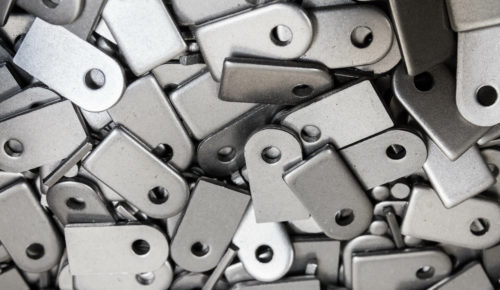The Function of Metal Stamping in Modern Manufacturing and Product Development
Wiki Article
The Evolution of Metal Marking Procedures: Advancements and Applications
The realm of steel marking procedures has seen a transformative journey noted by constant development and adaptation to meet the demands of modern-day commercial methods. From the standard techniques deeply rooted in history to the innovative technologies driving high-speed accuracy, the evolution of steel stamping has been absolutely nothing short of impressive. As brand-new tooling techniques and automation discover their way into this industry, the effects for effectiveness and high quality are profound. The applications cover throughout a range of markets, each profiting distinctively from the improvements in metal stamping processes.Conventional Metal Marking Techniques
Standard steel marking methods have long been the structure of manufacturing procedures in various markets because of their effectiveness and precision. The procedure involves forming a metal sheet or coil into a wanted shape by pushing it between a die and a strike. This approach is extensively made use of for producing big quantities of get rid of high precision at a quick speed.One of the essential benefits of standard steel stamping techniques is the capability to maintain tight tolerances, ensuring that each component satisfies the required specs continually. This level of precision is vital in sectors such as automotive, aerospace, and electronics, where also small deviations can bring about substantial issues.
In addition, standard steel stamping strategies use economical options for mass manufacturing contrasted to other manufacturing approaches. The capacity to mark components in fast sequence decreases manufacturing time and lowers labor prices, making it an attractive alternative for organizations looking to optimize their manufacturing procedures.
Appearance of High-Speed Stamping

One of the key benefits of high-speed stamping is its capability to keep accuracy and uniformity also at increased handling speeds. This accuracy is essential in markets where limited tolerances and intricate styles are called for. Furthermore, high-speed stamping enables for the handling of a variety of products, consisting of aluminum, stainless steel, and copper, additional increasing its applicability across numerous industries.
Moreover, the introduction of high-speed stamping has enabled makers to meet the growing demand for intricate components in industries such as auto, aerospace, and electronics (Metal Stamping). By leveraging the speed and precision of high-speed stamping innovation, firms can boost their competition in a rapidly evolving market landscape
Improvements in Tooling Technology
With the development of high-speed stamping allowing boosted precision and efficiency in metal creating procedures, the field of steel marking has actually seen significant improvements in tooling modern technology. Tooling technology plays a critical function in metal stamping procedures, influencing elements such as product quality, manufacturing rate, and total cost-effectiveness. One vital improvement in tooling technology is the growth of smart tooling systems that include sensing units and monitoring gadgets to offer real-time data on the marking procedure. These systems can discover issues such as tool wear or misalignment, enabling for immediate changes to maintain ideal efficiency.By using these sophisticated products, tooling manufacturers can generate passes away and company website molds that hold up against the high stress and temperature levels involved in steel stamping processes, resulting in longer device life and improved manufacturing performance. On the whole, these improvements in tooling technology have changed the metal stamping market, allowing suppliers to attain higher degrees of accuracy, efficiency, and expense financial savings.
Integration of Automation in Stamping
As automation remains to reshape the landscape of metal stamping processes, the integration of automated systems has read this post here actually come to be increasingly common in modern production centers. Automated systems offer many benefits in steel stamping, consisting of boosted efficiency, enhanced accuracy, and enhanced safety and security. By incorporating automation into stamping processes, manufacturers can lower cycle times, reduce product waste, and maximize production throughput.
Among the essential components of automation in stamping is making use of robotic arms for tasks such as material handling, part control, and quality examination (Metal Stamping). These robot systems can carry out recurring and labor-intensive jobs with speed and accuracy, liberating human operators to focus on more complex operations. Furthermore, automation permits real-time monitoring and adjustment of marking processes, resulting in greater total process control and quality control
Moreover, the assimilation of automation in marking allows manufacturers to attain regular component high quality, fulfill limited tolerances, and enhance overall performance. As modern technology remains to advance, the duty of automation in metal stamping processes is expected to expand even more, driving innovation and performance in the production sector.
Applications Throughout Diverse Industries
Incorporating metal marking processes across diverse industries showcases the versatility and adaptability of this production method. Additionally, the appliance sector benefits from metal marking processes to make parts for refrigerators, cleaning makers, and other household home appliances. The adaptability blog here of steel stamping procedures makes it an important manufacturing strategy across numerous markets, showing its importance in modern manufacturing processes.Conclusion

Report this wiki page